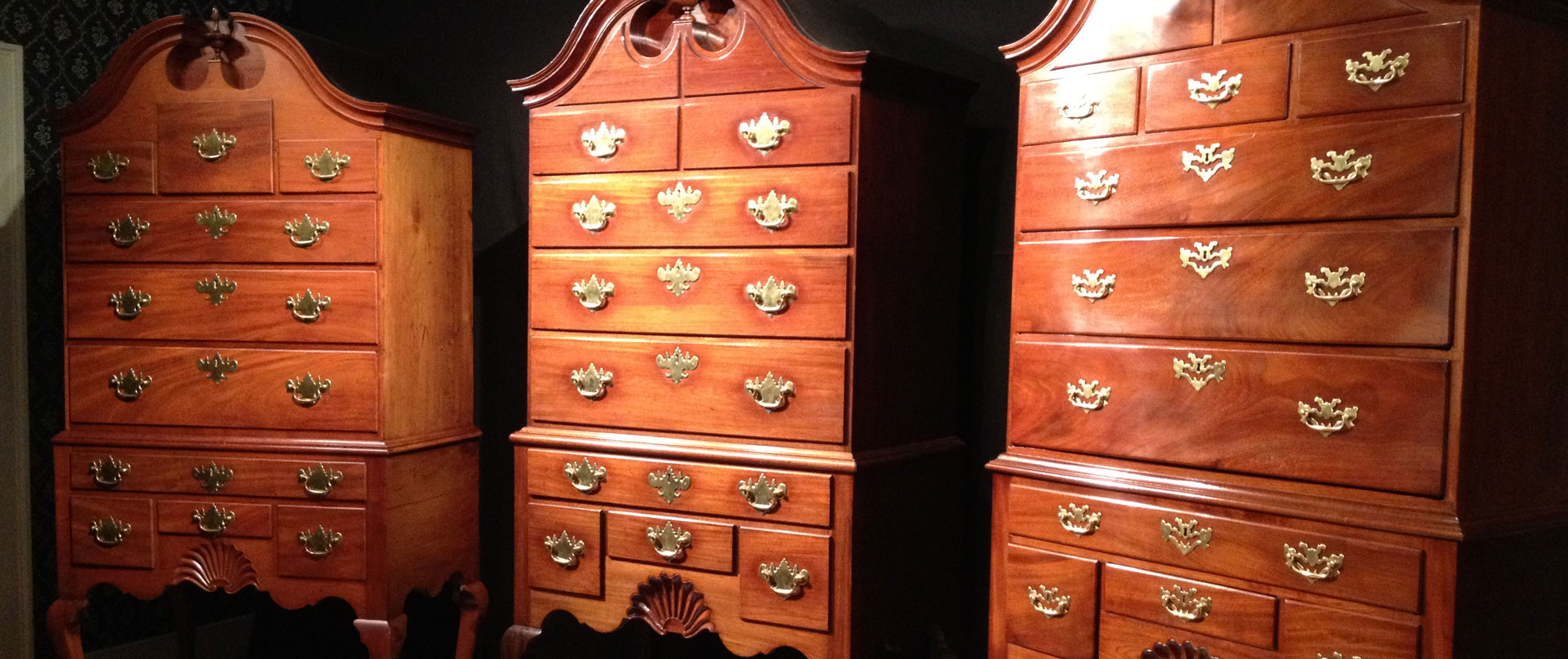Three high chests (or “highboys”), including one on loan from the Ott family of Providence, are shown alongside one another. One of the chests is attributed to Benjamin Baker and the makers of two are unknown. The designs and details of each – the subtly-curving cabriole leg, the stylized carved shell, and the ball-and-claw foot – are signatures of early American Newport furniture makers.
The exhibit presents museum visitors with three similar, yet distinctive Newport pieces, and allows a closer look at the overall design and special details of embellishment. Scholars also have the opportunity to compare significant highboys side-by-side in order to see makers’ styles and fine points of construction in relationship to one another.


